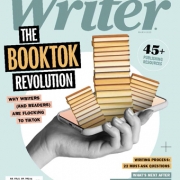Best Content Marketing – Both Empathetic and Authoritative
“To position yourself as the guide for your customer needs,” says Donald Miller in Marketing Made Simple, ” you need to express empathy and demonstrate authority. Together, empathy and authority make a powerful one-two punch, while, Miller cautions, “empathy without authority falls flat, as does authority without empathy.”
On a website, Miller suggests, there are three ways to communicate authority:
- testimonials
- logos of companies you’ve worked with
- statistics: years you’ve been in business, how many clients have worked with you
Meanwhile, to communicate empathy, he suggests, use “we know what it feels like to…” statements in the content.
Interestingly, the three “soundbites” Miller suggests looking for when collecting testimonials are element that, at Say It For You, we suggest are “soundbites” on which to base blog posts:
- Overcoming objections: “I worried that the course was going to be a waste of time. I was wrong…”
In creating content for marketing blogs, we need to keep in mind that people are online searching for for solutions for dilemmas they’re facing. But, since searchers haven’t always formulated their questions, what I suggest is that we do that for them, anticipating blog readers’ negative assumption questions. - Solving problems: “I’m on my feet all day, and my lower back used to ache. Now, with my new XYZ shoes….
As you’re describing how your product or service solved clients’ problems, the reaction you’d like to elicit in blog readers is sighs of relief that they’ve found you. - Adding value: “I was skeptical of the price, but I’m so glad I used…”
A small business owner in a retail or services field cannot hope to compete in purchasing ads and needs to rely on organic search to attract eyeballs. With blog marketing, using consistency and commitment, they have a chance a winning the customer acquisition game.
One way content writers can project empathy is with history-of-our-company background stories. Those personal anecdotes can have a humanizing effect, engaging readers and creating feelings of empathy and admiration for the business owners or professional practitioners who overcame adversity.
At the same time, “authority” is an important term in marketing blog writing. For one, Google’s algorithms are sensitive to authority when selecting which content to match with a reader’s query. Perhaps even more important, readers visit your blog for answers and for information they can trust. The success of your blog marketing efforts will be very closely aligned with your being perceived as a SME (subject matter expert) in your field.
Content marketing needs to be both – empathetic and authoritative!





Follow us online!